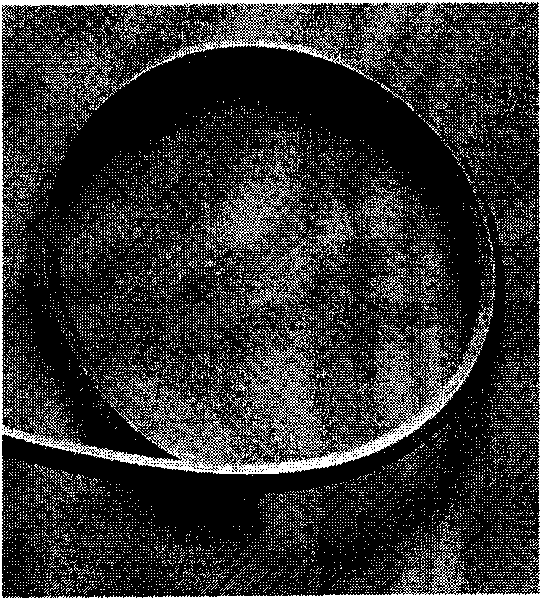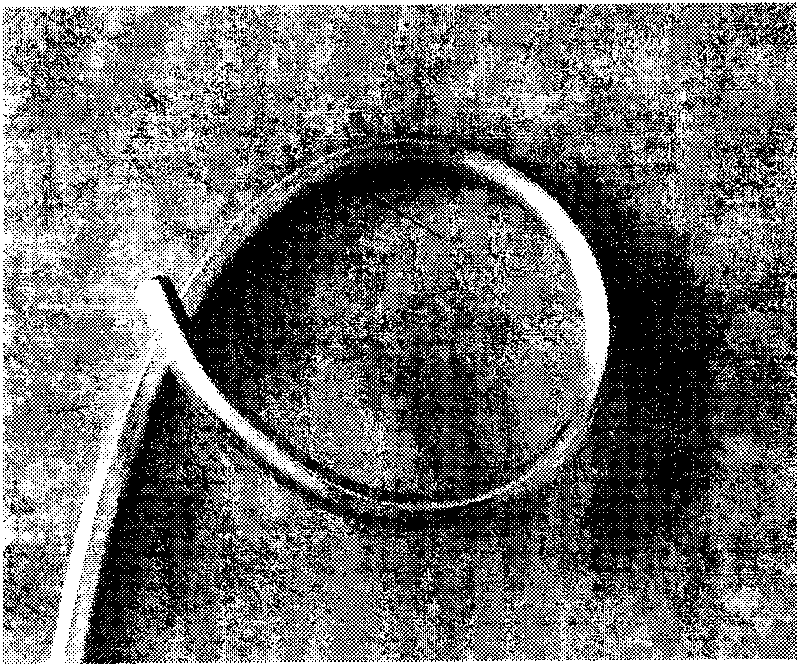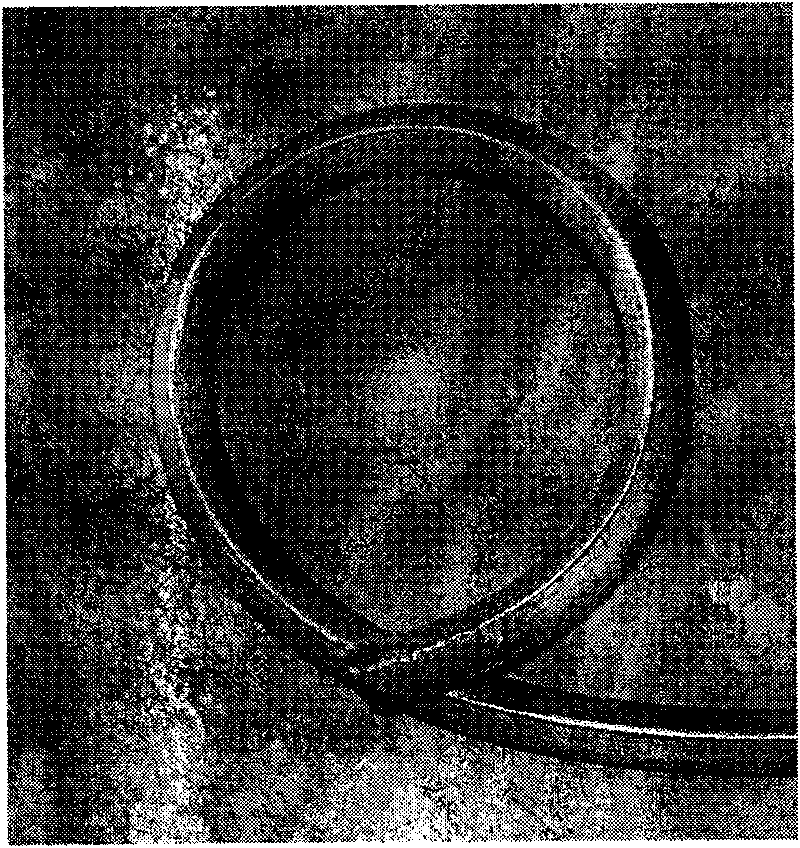Method for detecting low-temperature brittleness of zinc anode ribbon
A low-temperature brittleness and detection method technology, which is applied in the direction of testing the strength of materials by applying a stable bending force, can solve the problems of anode failure, brittle fracture, and large difference between ductility and brittleness, etc., and achieves simple methods, easy operation, and simple measurement Effect
- Summary
- Abstract
- Description
- Claims
- Application Information
AI Technical Summary
Problems solved by technology
Method used
Image
Examples
Embodiment 1
[0031] According to the application temperature range of the zinc anode belt, the test temperature range is set to -20~20°C, and the test temperature range is divided into 5 test temperature points, and the interval between each test temperature point is 10°C, and each test temperature point is corresponding , Take Type IIB type sacrificial zinc anode strip samples (type B zinc anode strip is diamond-shaped in cross section, and the diagonal length is 15.88mm×22.23mm). According to the number of samples tested at each test temperature is 3, prepare 15 samples of corresponding specifications and quantities.
[0032] The cooling medium in the low-temperature tank of the cooling device is air, and the cold source is a refrigerator. According to the test temperature, the temperature is lowered by manually adjusting the temperature of the cold source, that is, the refrigerator. Place 15 samples in the uniform temperature zone of the low-temperature tank to cool, and keep an approp...
Embodiment 2
[0043] Embodiment 2 except that the sample is a TypeIIC type zinc anode strip (the cross section of the C type zinc anode strip is a rhombus, and the length of the diagonal line is 12.7mm * 14.29mm), the cold source is liquid nitrogen, and the holding time is 4 hours, all the others are Same as Example 1. See Table 3 for the maximum bending diameter of the sample at each test temperature point of Example 2.
[0044] Table 3 Bending diameter test results of Type II C zinc anode strips at different temperatures
[0045]
[0046] Quantitatively judge the maximum bending diameter of Type II C zinc anode strips at different temperatures according to the above table.
[0047] According to the test results of Example 1 and Example 2, the maximum bending diameters of different types of zinc anode strips at different temperatures can be compared and analyzed, which is intuitive and easy to understand, and can provide theoretical guidance for actual production and engineering applic...
PUM
 Login to View More
Login to View More Abstract
Description
Claims
Application Information
 Login to View More
Login to View More - R&D
- Intellectual Property
- Life Sciences
- Materials
- Tech Scout
- Unparalleled Data Quality
- Higher Quality Content
- 60% Fewer Hallucinations
Browse by: Latest US Patents, China's latest patents, Technical Efficacy Thesaurus, Application Domain, Technology Topic, Popular Technical Reports.
© 2025 PatSnap. All rights reserved.Legal|Privacy policy|Modern Slavery Act Transparency Statement|Sitemap|About US| Contact US: help@patsnap.com



